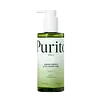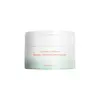What's inside
What's inside
 Key Ingredients
Key Ingredients

 Benefits
Benefits

 Concerns
Concerns

 Ingredients Side-by-side
Ingredients Side-by-side

Cetyl Ethylhexanoate
EmollientPEG-20 Glyceryl Triisostearate
EmollientSynthetic Wax
AbrasiveHelianthus Annuus Seed Oil Unsaponifiables
EmollientArgania Spinosa Kernel Oil
EmollientButyrospermum Parkii Butter
Skin ConditioningSimmondsia Chinensis Seed Oil
EmollientSqualane
EmollientOlea Europaea Fruit Oil
Masking1,2-Hexanediol
Skin ConditioningWater
Skin ConditioningPanthenol
Skin ConditioningButylene Glycol
HumectantPropanediol
SolventCentella Asiatica Extract
CleansingMelaleuca Alternifolia Flower/Leaf/Stem Extract
Skin ConditioningCalendula Officinalis Flower Extract
MaskingEthylhexylglycerin
Skin ConditioningCetyl Ethylhexanoate, PEG-20 Glyceryl Triisostearate, Synthetic Wax, Helianthus Annuus Seed Oil Unsaponifiables, Argania Spinosa Kernel Oil, Butyrospermum Parkii Butter, Simmondsia Chinensis Seed Oil, Squalane, Olea Europaea Fruit Oil, 1,2-Hexanediol, Water, Panthenol, Butylene Glycol, Propanediol, Centella Asiatica Extract, Melaleuca Alternifolia Flower/Leaf/Stem Extract, Calendula Officinalis Flower Extract, Ethylhexylglycerin
 Reviews
Reviews

Ingredients Explained
These ingredients are found in both products.
Ingredients higher up in an ingredient list are typically present in a larger amount.
Ethylhexylglycerin (we can't pronounce this either) is commonly used as a preservative and skin softener. It is derived from glyceryl.
You might see Ethylhexylglycerin often paired with other preservatives such as phenoxyethanol. Ethylhexylglycerin has been found to increase the effectiveness of these other preservatives.
Olea Europaea Fruit Oil is the fixed oil obtained from the ripe fruit of the Olive. In other words - olive oil.
The primary contents of olive oil are glycerides of the fatty acids linoleic, oleic and palmitic.
Olive oil also contains antioxidants such as Vitamin E. Antioxidants may help reduce signs of aging by fighting unstable free-radical molecules. It also contains Vitamins A (retinol), D, and K.
The squalene in olive oil makes it a great emollient. Emollients help soothe and soften your skin by trapping moisture in. This makes olive oil a great skin moisturizer.
Studies show olive oil to have antibacterial and antifungal properties in low concentrations. Another study found olive oil irritated sensitive oily skin. We always recommend speaking with a professional about using this ingredient in your routine.
Due to the fatty acid content, this ingredient may not be fungal-acne safe.
Learn more about Olea Europaea Fruit OilThis oil comes from the seeds of the desert shrub called Jojoba. It is more commonly known as jojoba oil, a non-comedogenic oil.
Jojoba oil does not contain fragrance and has many fatty-acids, making it a great soothing ingredient.
It also contains Vitamin E, a great moisturizing ingredient. Vitamin E is also an antioxidant and protects your skin against oxidative damage.
This ingredient humectant properties, meaning it helps draw moisture from the air. This helps keep your skin hydrated.
While jojoba has antibacterial properties, it is only able to kill some strains of bacteria.
Studies also show it helps in wound healing. In fact, Indigenous cultures have used jojoba as a moisturizer and to help treat burns for centuries.
Fun fact: Jojoba oil similar to natural human skin sebum, so it has a great effect on dry skin. It is also promising with helping to regulate sebum production.
Due to its fatty acid content, Jojoba oil may not be fungal acne safe. We recommend speaking with a professional if you have any concerns.
Learn more about Simmondsia Chinensis Seed Oil